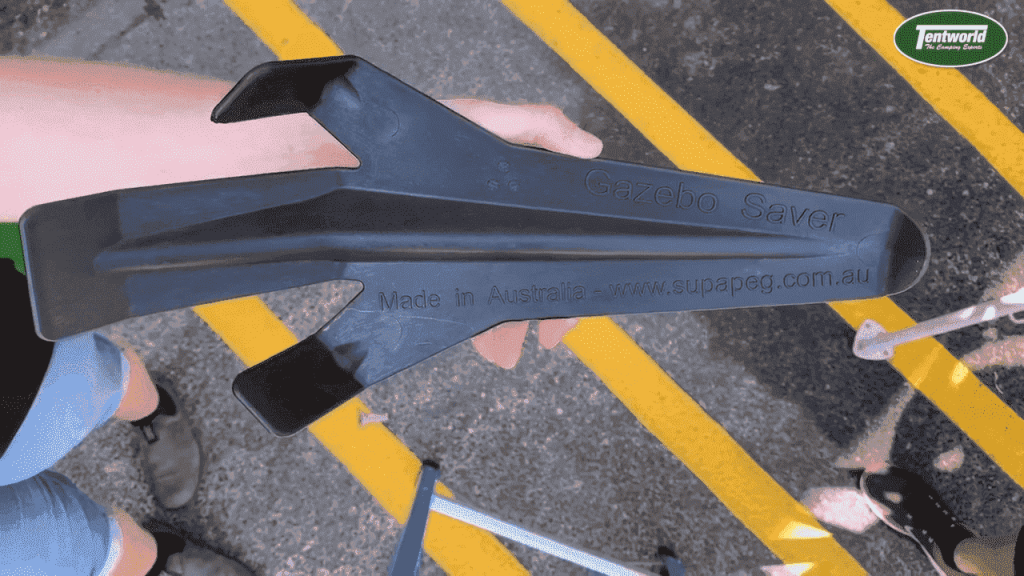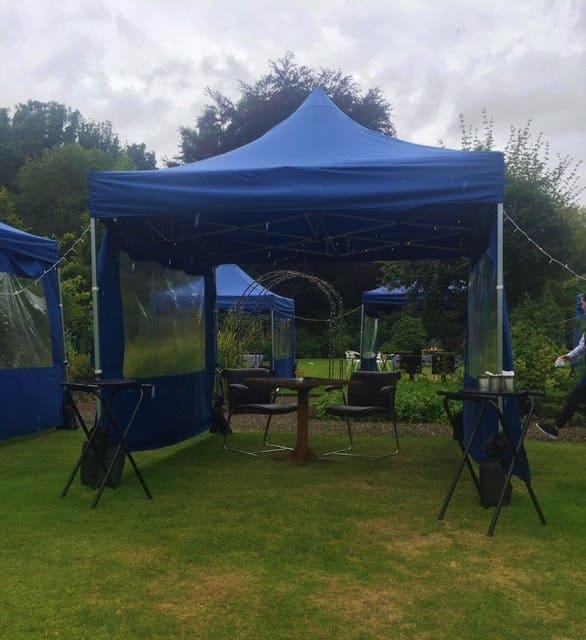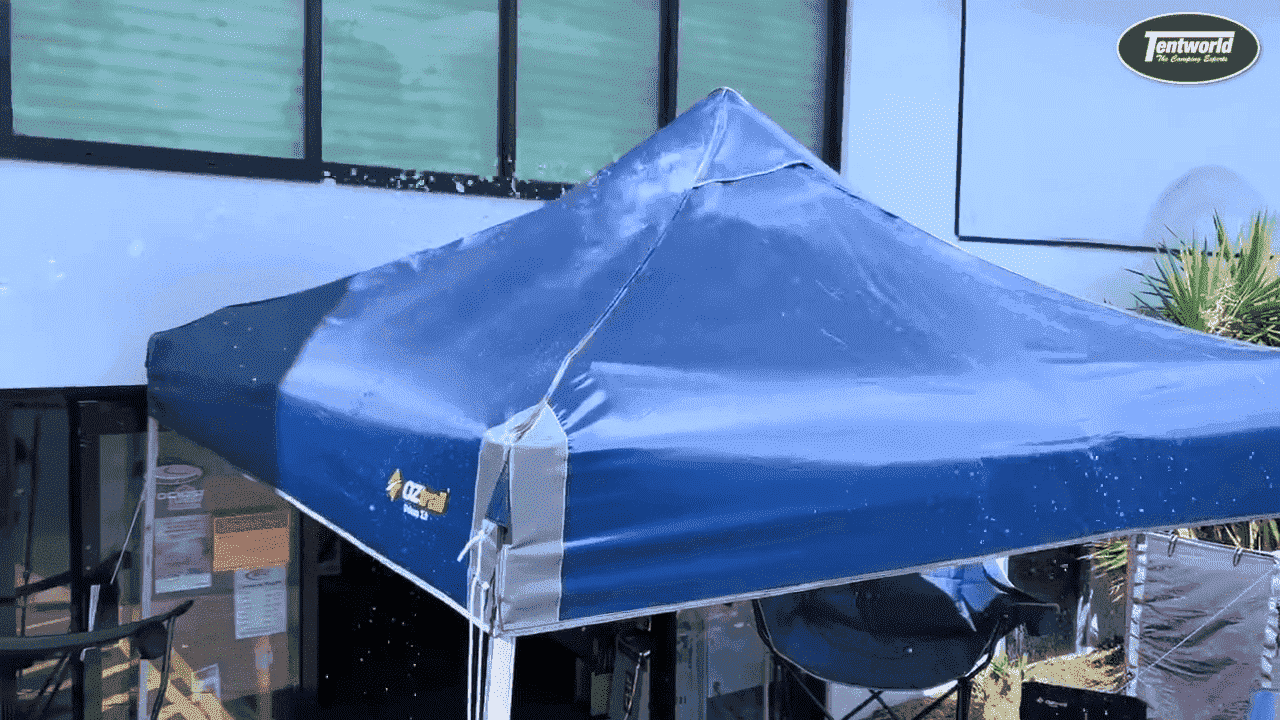How to keep water from pooling on gazebo First, it is essential to identify the causes of water pooling, such as gazebo design, location, and installation issues, and to address them accordingly. Clearing debris and maintaining gutters can also help ensure proper water flow.
How to keep water from pooling on the gazeboInstalling a sloped roof or using a canopy to divert water away from the gazebo, as well as using a water-resistant coating on the gazebo surface, are other effective ways to prevent water pooling. Additionally, using a rain diverter or a rain chain can help direct water away from the gazebo.
Other tips include placing the gazebo on level ground, using landscaping techniques to redirect water flow, and monitoring and addressing any drainage issues in the surrounding area. Taking these steps can help prevent water from pooling on a gazebo, preventing damage and maintaining its longevity.
How to keep water from pooling on a gazebo: To prevent water from pooling on a gazebo, it’s important to maintain proper water flow. This can be achieved by clearing debris, maintaining gutters, and installing a sloped roof or using a canopy to divert water away from the gazebo.
A water-resistant coating on the gazebo surface, a rain diverter, or a rain chain can also help direct water away from the gazebo.
Placing the gazebo on level ground or adding a foundation, using landscaping techniques to redirect water flow, and monitoring drainage issues in the surrounding area are also effective ways to prevent water from pooling on a gazebo.
Causes of Water Pooling on Gazebos and How to Address Them
There are several causes of water pooling on gazebos. One of the main reasons is inadequate drainage, where the gazebo’s roof lacks a proper slope or gutter system to direct water away from the structure. Improper installation can also contribute to water pooling, such as placing the gazebo on uneven or sloping ground or not securing the structure properly to the ground.
The gazebo’s location in a low-lying area can also be a factor, as water naturally accumulates in these areas. In addition, heavy rainfall or snowfall can overwhelm the gazebo’s drainage system, causing water to pool on the roof.
Understanding the causes of water pooling is crucial to take the necessary steps to prevent it from happening.
Identifying the Causes of Water Pooling on Gazebos
To stop water from building up on gazebos, it’s important to figure out what causes it. One reason is when the gazebo’s roof doesn’t have a slope or a gutter to direct water away from the gazebo. Another reason is when the gazebo isn’t set up properly on the ground, like if it’s on an uneven or sloping area.
If the gazebo is in a low area, water will naturally gather there. When there’s heavy rain or snow, the gazebo’s drainage system can get overloaded, which causes water to pool on the roof. If we understand these causes, we can take steps to keep water from pooling on gazebos.
How the Design, Location, and Setup of Gazebos Affect Water Pooling

The way gazebos are made, where they are placed, and how they are set up can make water pool on them. Gazebos with a flat roof or not enough slope are more likely to get water on them. A good gutter system can help send water away from the gazebo and prevent water from sitting on the roof.
Where you put the gazebo can also make a difference. If you put it where water usually gathers, like a low area, there’s a higher chance of water building up on the roof.
It’s important to install the gazebo correctly to stop water from pooling. This means putting it on a level surface and securing it to the ground properly.
Knowing how these things can cause water to pool on gazebos is important so we can stop it from happening.
How to Keep Water from Pooling on Gazebos?
Water pooling on gazebos can cause damage to the structure and create an unpleasant environment. There are several ways to prevent water from accumulating on gazebos. One way is to choose a gazebo with a peaked or steeply sloped roof, as this design helps water flow off the roof more easily.
Another way is to ensure that the gazebo is properly installed on a level surface and anchored to the ground, as this can help prevent water from accumulating on the roof. Installing a gutter system is also essential in directing water away from the gazebo’s foundation and preventing water from accumulating on the roof.
Regularly cleaning the gutter system is also important to ensure it is working effectively. Additionally, selecting a good location for the gazebo can also prevent water pooling. Avoid placing the gazebo in a low-lying area or an area where water naturally collects.
By implementing these five ways to keep water from pooling on gazebos, homeowners can prolong the life of their structure and enjoy their outdoor space without the worry of water damage.
1. Maintain Gutters and Clear Debris to Prevent Gazebo Water Pooling
Clearing debris and maintaining gutters is an effective way to keep water from pooling on gazebos. Debris like leaves, twigs, and branches can accumulate in gutters, preventing water from flowing freely.
This can cause water to overflow and potentially pool on the gazebo roof. Regularly cleaning gutters and removing debris can help ensure proper water flow and prevent water from accumulating on the gazebo roof.
It’s also important to check for any damage to the gutters and repair or replace them as needed. By keeping gutters clear and well-maintained, you can help prevent water pooling on your gazebo and extend its lifespan.
Using a Sloped Roof or Canopy

Installing a sloped roof or using a canopy is an effective way to prevent water from pooling on gazebos. Gazebos with flat roofs or inadequate slopes are more likely to accumulate water. A sloped roof can ensure that water flows off the gazebo roof and away from the foundation.
Moreover, using a canopy can provide additional protection from the rain and divert water away from the gazebo. There are different types of canopies available, including retractable and permanent options. It’s important to choose a canopy that fits your gazebo and meets your specific needs.
By installing a sloped roof or using a canopy, you can prevent water pooling and protect your gazebo from potential damage. Therefore, these solutions are recommended to ensure the longevity of your gazebo and provide a safe outdoor space during rainy seasons.
Water Resistant Coating
Using a water-resistant coating on the gazebo surface is a great way to protect the structure from damage caused by water. The coating helps to prevent water from penetrating the surface of the gazebo, which can lead to rot, warping, and other forms of damage over time.
With a water-resistant coating, the gazebo will be able to withstand exposure to rain, snow, and other forms of moisture without sustaining any lasting damage.
This can help to extend the lifespan of the gazebo and ensure that it remains in good condition for many years to come. Additionally, a water-resistant coating can make the gazebo easier to clean and maintain, as it will be less likely to become stained or discolored due to exposure to water.
Overall, using a water-resistant coating is a smart investment for anyone who wants to protect their gazebo from the effects of moisture and ensure that it remains a beautiful and functional outdoor space for years to come.
Rain Diverters and Rain Chains
Using a rain diverter or a rain chain is an effective way to direct water away from your gazebo and prevent water damage to the structure. Rain diverters are typically installed on the roof of the gazebo and work by collecting rainwater and diverting it away from the structure through a downspout.
This helps to prevent water from pooling around the base of the gazebo, which can lead to erosion and other forms of damage over time. Rain chains, on the other hand, are decorative chains that are hung from the roof of the gazebo and allow rainwater to flow down them, creating a soothing sound as the water moves.
This not only helps to direct water away from the gazebo but also adds a pleasant aesthetic touch to the outdoor space. Both rain diverters and rain chains are affordable and easy to install, making them a practical solution for anyone looking to protect their gazebo from water damage.
Additional Tips to Consider

In addition to using a water-resistant coating and rain diverters or rain chains, there are other steps you can take to prevent water from pooling on your gazebo. One option is to install a drainage system around the perimeter of the gazebo. This can be done by digging a trench around the structure and filling it with gravel or another porous material that will allow water to seep through.
Another option is to create a slight slope in the ground around the gazebo, so that water naturally flows away from the structure. Additionally, you can make sure that the gutters on your home or other nearby structures are functioning properly and directing water away from the gazebo.
By taking these additional steps, you can further reduce the risk of water damage to your gazebo and ensure that it remains a beautiful and functional outdoor space for years to come.
Placing Your Gazebo on Level Ground or Adding a Foundation
Placing your gazebo on level ground or adding a foundation can help to address slope issues and prevent water from pooling around the structure. If your gazebo is currently situated on sloped ground, water may collect around the base of the structure during heavy rainfall, which can lead to erosion and other forms of damage over time.
Placing the gazebo on level ground can help to prevent this by ensuring that water flows away from the structure. Alternatively, you may want to consider adding a foundation to the gazebo, such as a concrete pad or piers, to create a level surface for the structure to sit on.
This can also help to address any slope issues and prevent water from pooling around the base of the gazebo. By taking these steps, you can help to protect your gazebo from water damage and ensure that it remains a stable and functional outdoor space for years to come.
Using Landscaping Techniques
Using landscaping techniques to redirect water flow away from the gazebo is a practical and attractive way to prevent water pooling around the structure. One option is to create a rain garden, which is an area of your yard that is designed to collect and absorb excess water.
This can be done by selecting plants that are tolerant of wet conditions and placing them in a low-lying area of your yard where water tends to collect. Another option is to create a swale, which is a shallow ditch that is designed to direct water away from your gazebo and into a designated drainage area.
This can be lined with gravel or other permeable materials to help absorb excess water. Additionally, you can consider using retaining walls or other hardscaping elements to redirect water flow away from your gazebo.
By using these landscaping techniques, you can help to protect your gazebo from water damage while also enhancing the beauty of your outdoor space.
The Importance of Monitoring and Addressing Drainage Issues in Outdoor Spaces
Monitoring and addressing drainage issues in the surrounding area is crucial to maintaining a safe and functional outdoor space. Poor drainage can result in a host of problems such as soil erosion, standing water, and damage to nearby structures.
In addition, standing water can create a breeding ground for mosquitoes and other pests, which can be a health hazard. Regular monitoring and maintenance of drainage systems can help identify potential issues before they become major problems.
This may involve routine inspections, cleaning out gutters and downspouts, and addressing any blockages or damage in drainage pipes. By taking proactive steps to address drainage issues, property owners can help ensure their outdoor space remains safe and enjoyable for all who use it.
FAQs
Q.1 How do you stop a canopy from pooling?
If you have a portable canopy and you notice that water is pooling on the roof, there’s an easy solution. You can place a hula hoop or a pool noodle between the frame and the canopy fabric.
This will help take up any extra slack in the fabric and prevent water from accumulating on the roof. By doing this, you can avoid problems like sagging or collapsing and keep your canopy working properly.
Q.2 How do I make my gazebo water tighter?
If your gazebo is made of canvas and you want to protect it from water, you can buy a special spray that makes it waterproof. First, you spray the material with waterproofing spray, and then you wait for it to dry. After it dries, spray it again to seal the finish.
It’s important to check the weather forecast before you start this job because the spray needs time to dry. You should only do this on a day when you know it won’t rain for a while.
Q. 3 How do I stop my gazebo roof from leaking?
If your pergola roof is made of wood and it’s leaking, the problem could be a gap between two wood panels. To fix it, you can use a caulking gun filled with a special sealant. This sealant can be either oil-based or made of watertight polyurethane. Simply insert the caulking gun into the gap and apply the bond directly to the area. This will help prevent any water from getting through the gap and leaking into your pergola.
Conclusion
In conclusion, water pooling on gazebos can be a problem that leads to structural damage and safety hazards. This issue can be caused by factors such as the design, location, and installation of the gazebo.
There are several ways to prevent water pooling, including maintaining gutters, installing a sloped roof or canopy, using water-resistant coatings, and diverting rainwater with rain diverters or chains.
Additionally, leveling the ground and using landscaping techniques can also help. It’s important to monitor and address any drainage issues in the surrounding area to prevent water from accumulating near the gazebo. By taking these steps, you can ensure a safe and enjoyable outdoor space.
We hope you will be well aware of How to keep water from pooling on the gazebo by reading this comprehensive guide. If you have any questions, feel free to drop a comment below!


